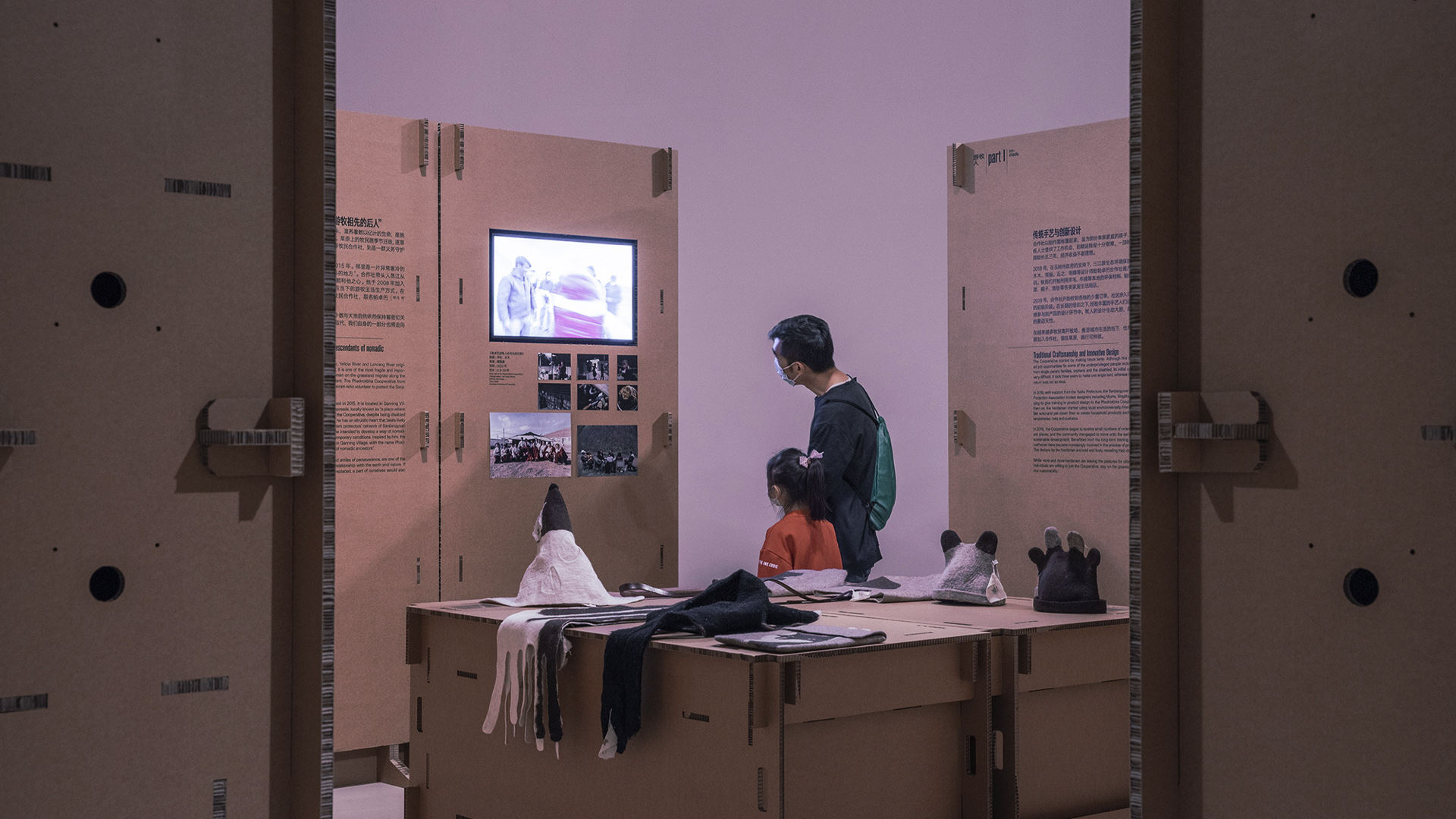An exhibition composed of a set of corrugated cardboard elements, totally removable and recyclable. It is a zero-impact exhibition system. Can this be achievable? According to the Studio LUO team that designed the “X-wall”, the answer is yes, simply by using cardboard. For the exposition “Back to the Future: Breaking the Time Barrier”, curators ZUO Jing and WANG Yanzhi wanted an installation that showcased the concept of “natural building” and that would be an integral part of the display. The Chinese studio LUO Studio chose to use cardboard to create the exhibition space. The result is a project that seeks to avoid material waste, in line with the current requirements of reducing the adverse impact on the environment.
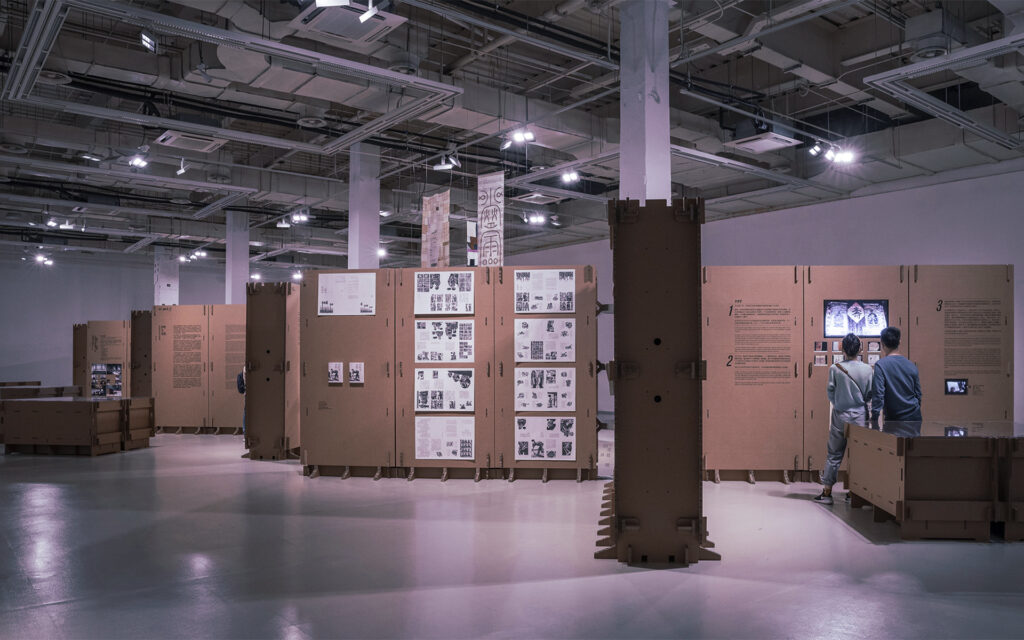
Preparation
In general, when planning the design of an exhibition, much more attention is paid to the organizational work that is carried out first, rather than to what happens later. The location is usually temporary. It has a short life cycle. The installation, exhibition, and disassembly times are also extremely short. For these reasons, common, fast, and low-cost methods and materials are generally preferred. Materials such as light steel, drywall, and latex paint (or other similar materials) are usually used. However, at the time of dismantling, the construction is completely demolished, resulting in a large amount of waste.
Corrugated cardboard
This material, on the other hand, is reusable and recyclable. It is lightweight and environmentally friendly. It is also suitable for displaying, processing, transporting, and assembling. Besides, the texture and color can match well with the theme of the exhibition, as well as the characteristics of the display. It gives a kind of “neutral background” that adapts perfectly to all occasions. That is why it was chosen as the main material for “X-wall” because it showcased the concept of “zero impact” perfectly. The designers had to consider some critical issues, though. The standard size of the selected corrugated board was 2.4 m by 1.2 m. and the elements consist of four pieces that extend from the center of a column in four directions. Three vertical corrugated cardboards can be connected horizontally to form a wall with a total length of 3.6 m.
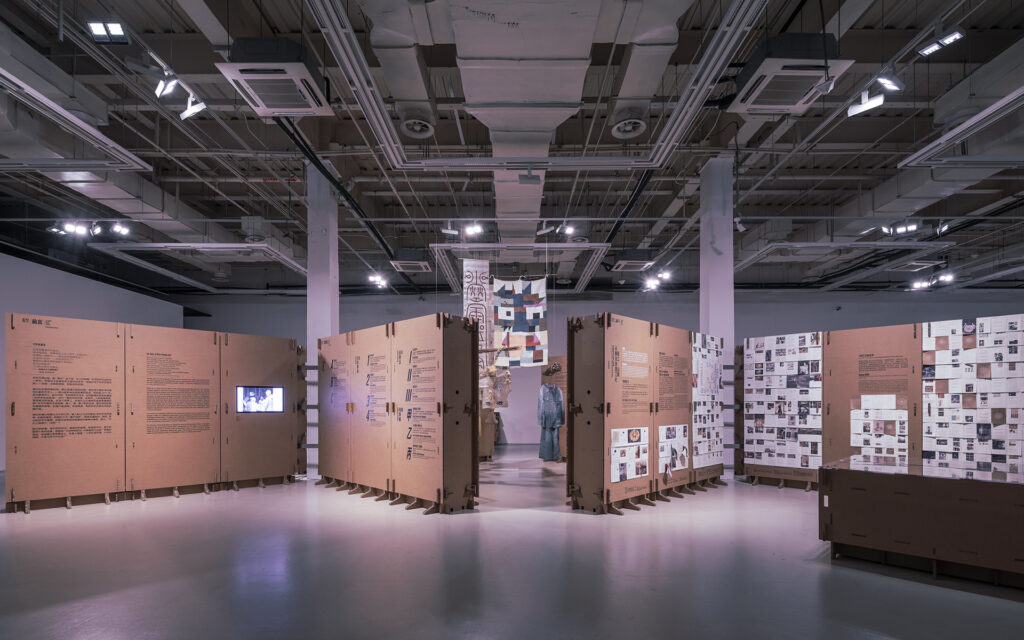
Assembling
The assembly of the system makes use of the structural qualities of corrugated cardboard like its rigidity, and workability. Due to this, it was possible to use the CNC cutting technique. Each component was made with concave and convex edges, creating an embedded structure, similar to the one of a normal box. Panels with two different thicknesses (15 mm and 20 mm) were used. This system guarantees the structural stability of the elements.
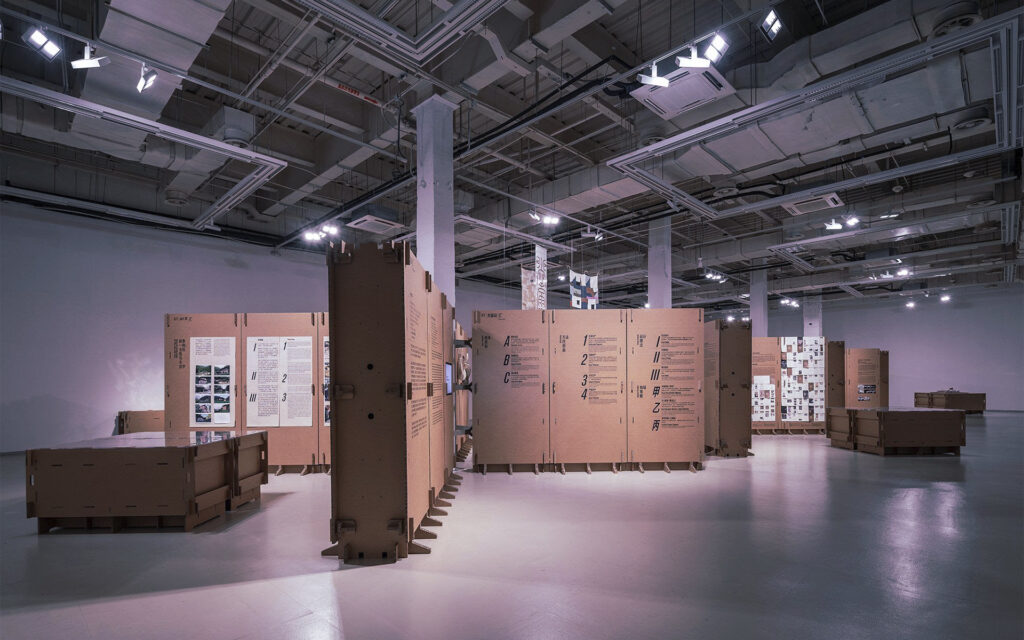
Customization
The graphics and texts are mostly screen-printed and pasted directly onto the cardboard. In some cases, they are fixed on other boxes with nails. The objects and equipment on display (including LCD screens, iPads, mp3 players, and headphones), as well as books, and woodcuts, required special structural components. “The biggest challenge was installing eight 53-inch LCD screens. In terms of spatial effect, the screens must be inserted and aligned with the cardboard surface. They should also be placed at different heights to be in balance with the graphics and text in a visually appealing manner. Therefore, it was necessary to apply some structural elements of reinforcement. These flexible elements also make assembly easier.” This allows customizing the settings according to the size of the individual objects.
The biggest challenge was installing eight 53-inch LCD screens. In terms of spatial effect, the screens must be inserted and aligned with the cardboard surface. They should also be placed at different heights to balance with the graphics and text in a visually appealing manner.
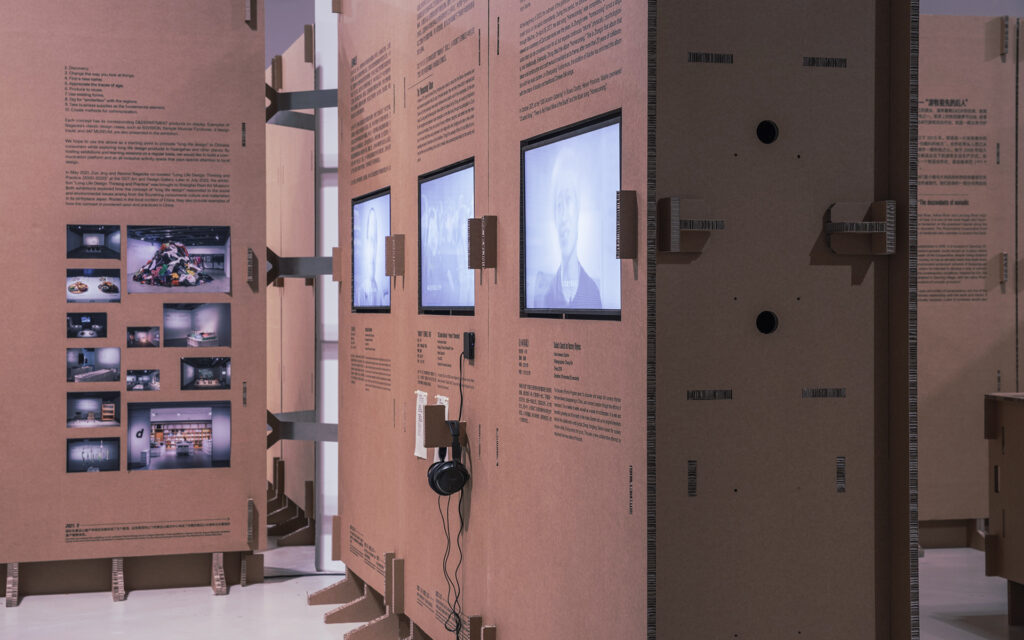
CNC machining
Due to the low density of the cardboard, less time is needed for CNC cutting and machining, compared to other conventional building materials. The 320 components used for the exhibition were transformed into 2,566 elements in less than two days. Subsequently, the exhibition modules of the stand were assembled in just two days by six or seven people on site. It was an efficient construction process thanks not only to the lightness of the cardboard but also because special assembly tools were not needed. This process also allows the exhibition to get disassembled at a great speed, and reuse its components, or recycle them.
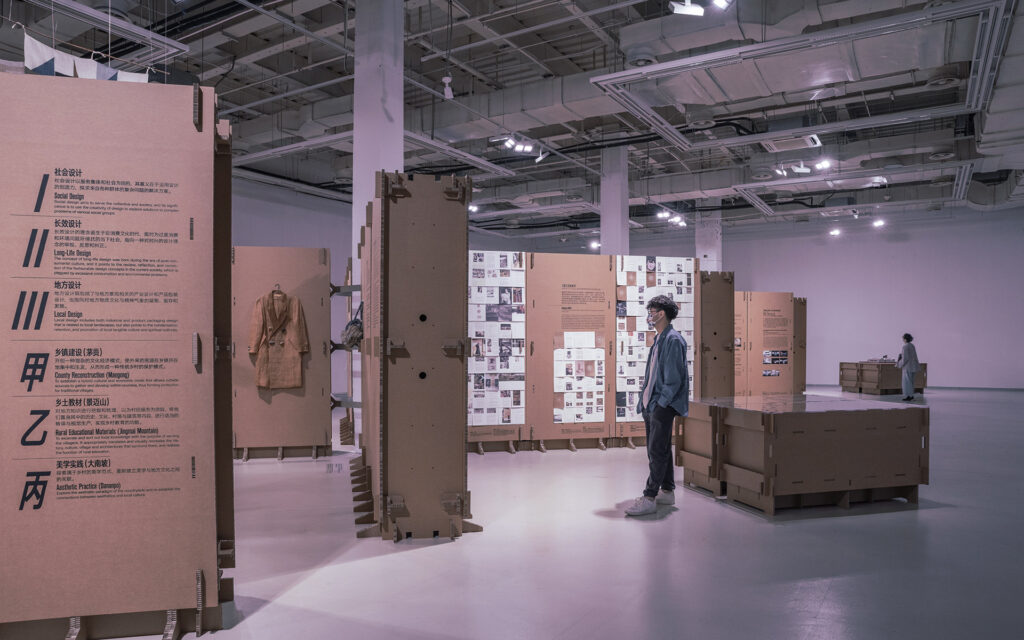
Recycling
According to the mantra of “reduce, reuse, and recycle”, the components will be disassembled and then reassembled to be reinstalled in different locations where the exhibition will take place. On the other hand, these walls and supports, made of corrugated cardboard, can also be reused in other contexts. In addition, at the end of its useful life, 96% of corrugated cardboard can still be recycled and reused.
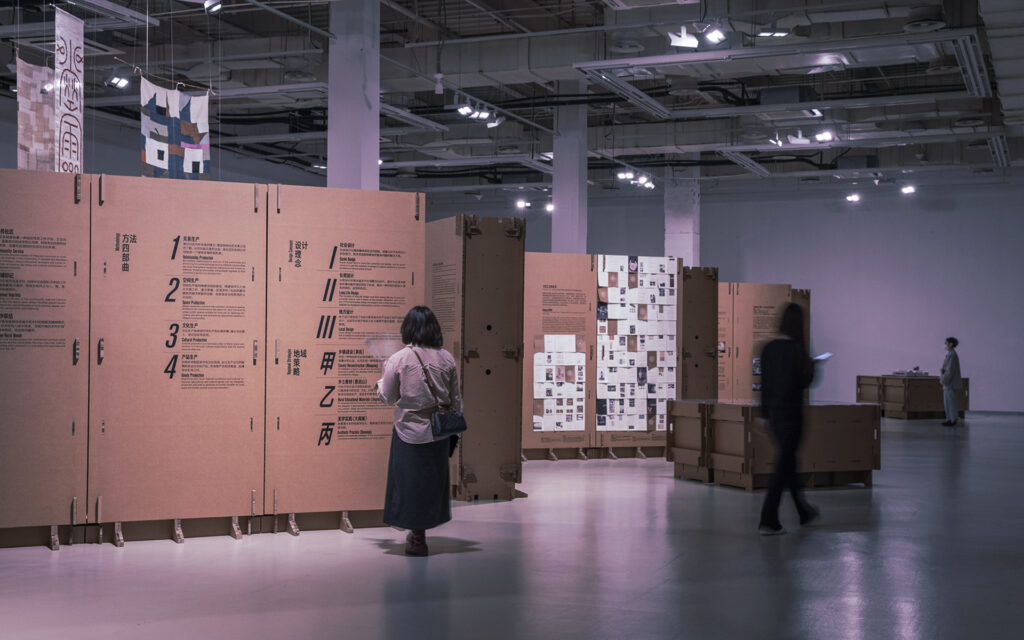
Exhibition space design: LUO studio
Instrucciones para el diseño espacial y la construcción: LUO Yujie, Lu Zhuojian, Wang Beilei, Hong Lun, Liang Jiahui
Curators: Zuo Jing, Wang Yanzhi
Visual Design: He Jianping
Place: Power Station of Art
About the exhibition: Power Station of Art
You may also be interested in Recycled flip-flops: saving shoes from the landfill


